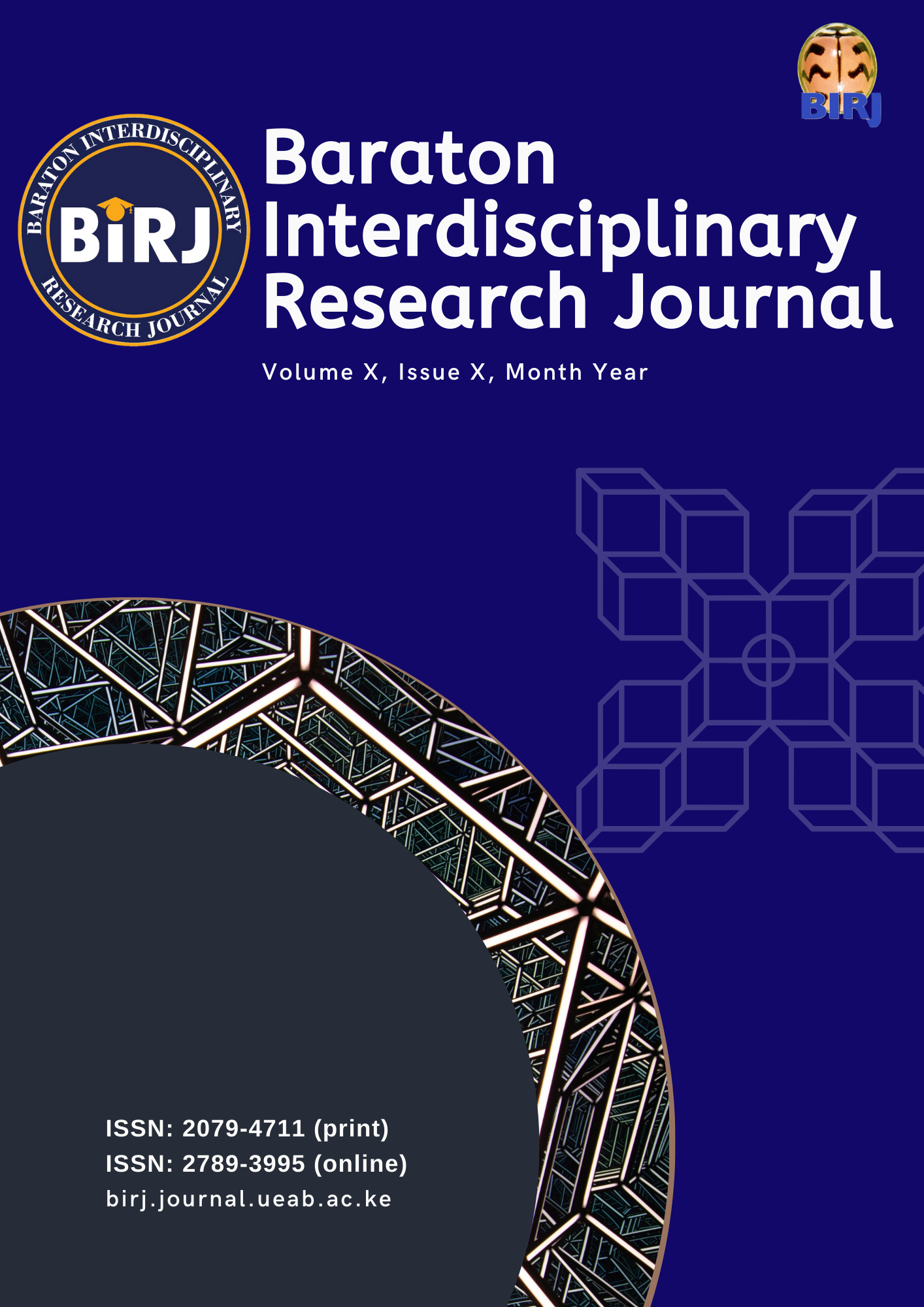BENEFITS AND CHALLENGES OF COLLABORATION IN THE INSTITUTIONS OF HIGHER LEARNING IN EAST-CENTRAL AFRICA DIVISION
Keywords:
Benefits, Challenges, Collaboration, Innovations, Human Resource, Partnership, TechnologyAbstract
Collaboration among institutions of higher learning is a current trend. Universities and colleges in various parts
of the world are encouraged to cooperate in research, teaching, human resource development, technological
innovations, development of academic programmes, and financial resources. The purpose of this study was to
identify benefits and challenges of collaboration in institutions of higher learning that are run by the Seventh
day Adventist church in East-Central Africa Division. Six out of seven institutions of higher learning operated
by the Church within the East-Central Africa Division participated in the study. Data were collected using a
survey questionnaire from School Deans, Heads of Departments, Directors of Affiliations, and lecturers in
volved in collaboration in the six institutions, and some lecturers who were directly involved in collaborative
partnership.. Thirty (30) respondents were given research instruments to respond to and 53.33% of them re
turned the duly filled-in questionnaires.
Data collected were coded and analysed using Statistical Package for Social Sciences (SPSS) for Windows
version 11.5, which generated descriptive statistics on variables including frequencies, means, and standard
deviations. Findings indicated that collaborating institutions did not benefit much out of the partnership, but
respondents agreed that collaboration impacted them in human resource development, introduction of new pro
grammes, and improving the already existing programmes. This means that collaborations did not develop new
human resources but developed the already existing ones. The study further found out that the most challenging
aspect in collaboration was budget implications and communication procedures on collaborative procedures.
This means that institutions found it hard to keep up with the collaborations because of budgetary allocation
constraints to the aspect of partnership and unclear procedures in the collaborative procedures and practices.
Interpretations and implications for education practices are discussed.

Downloads
Published
Issue
Section
License
License Terms
All articles published in the Baraton Interdisciplinary Research Journal (BIRJ) are licensed under a Creative Commons Attribution-NonCommercial-ShareAlike 4.0 International License (CC BY-NC-SA 4.0).
This license permits users to share (copy and redistribute) and adapt (remix, transform, build upon) the material for non-commercial purposes, provided that proper attribution is given to the original authors, a link to the license is included, and any derivative works are distributed under the same license.
Full license details: https://creativecommons.org/licenses/by-nc-sa/4.0/
Most read articles by the same author(s)
- Korso Gude Butucha, EMERGING TRENDS IN STUDENT ENGAGEMENT IN THE 21ST CENTURY CONTEMPORARY WORLD , Baraton Interdisciplinary Research Journal: Vol. 6 (2016): Special Issue
- Korso Gude Butucha, E-LEARNING NEEDS ASSESSMENT AT THE UNIVERSITY OF EASTERN AFRICA, BARATON , Baraton Interdisciplinary Research Journal: Vol. 6 (2016): Special Issue
- Yona Balyage, Korso Gude Butucha, Fanta Hotamo, ACCREDITATION OF INSTITUTIONS OF HIGHER LEARNING IN A GLOBAL ERA: PROSPECTS, CHALLENGES, AND IMPLICATIONS , Baraton Interdisciplinary Research Journal: Vol. 5 (2015): Special Issue
- Korso Gude Butucha, COMPARISON OF STAFF AND FACULTY PERCEPTIONS OF ORGANIZATIONAL COMMITMENT IN A SELECTED PRIVATE INSTITUTION OF HIGHER LEARNING IN KENYA , Baraton Interdisciplinary Research Journal: Vol. 7 (2017): Special Issue
